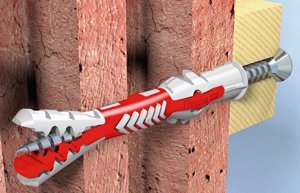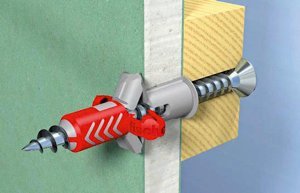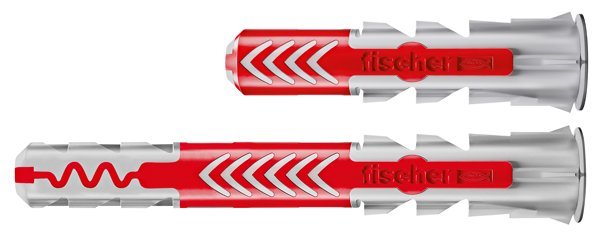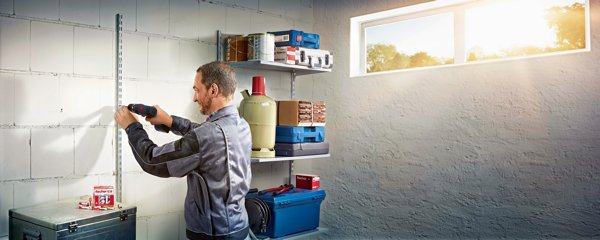From the wall shelf to the washstand in the bathroom – many objects, including heavy ones, have to be attached to the walls. How securely the loads are then held depends not least on the wall construction material and the selection of the appropriate fasteners. At this point, many a do-it-yourselfer feels a certain amount of uncertainty, and the wide range of different dowels does not exactly provide a better perspective. With his DUOPOWER relieved fisherman spoiled for choice, because this multi-purpose plug automatically recognizes whether it is being installed in solid building materials or a wall with cavities and behaves accordingly.
It does not matter whether the attachment z. B. in concrete, a brick wall, a lightweight wall paneled with plasterboard or a number of other building materials: The dowel, which is made of two components, is simply placed in the pre-drilled hole and “feels” the conditions inside the wall with its gray nylon component. When the screw is screwed in, the resistance of the wall building material occurring in the various dowel zones determines whether the dowel spreads against solid material, folds open at the end or becomes knotted behind a wall panel.


The all-rounder can be used with wood screws or chipboard screws – and of course also with hanger bolts, where a wood thread is screwed into the wall and a metric thread outside the wall offers fastening options for suitable headwinds or nuts. The manufacturer only mentions one restriction: When mounting on a plate using a screw with a partial thread, the part of the screw without a thread must not be longer than the attachment to be mounted. This is understandable, as otherwise the dowel could not knot behind the plate.

The dowel is available in nine different dimensions with six different diameters (5, 6, 8, 10, 12 and 14). The 6, 8 and 10 dowels are also available in a long version to provide more support in problematic building materials. The loads that can be held per individual dowel depend on the size of the dowel and the wall building material. You can download a table for this from fischer. [ha]
Photos: epr/fischerwerke
![]()








